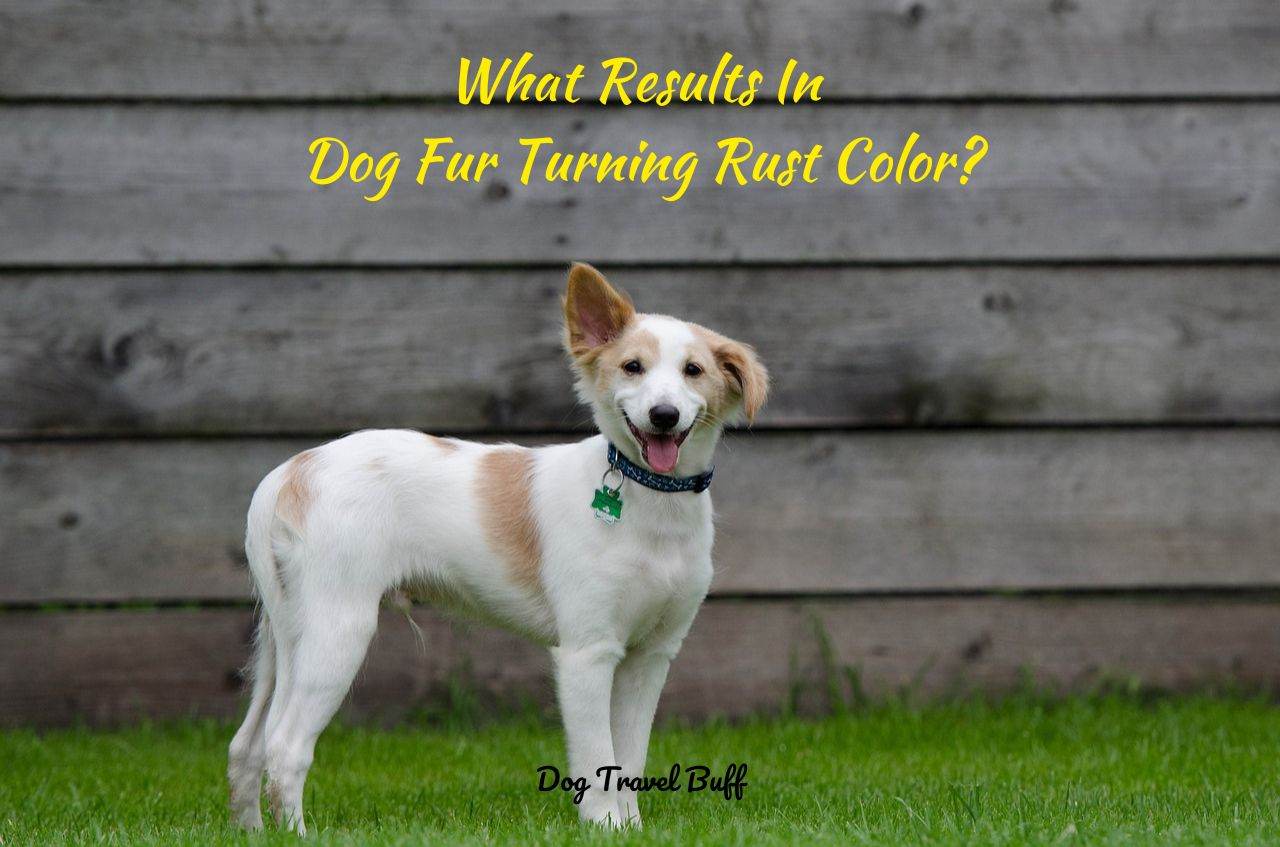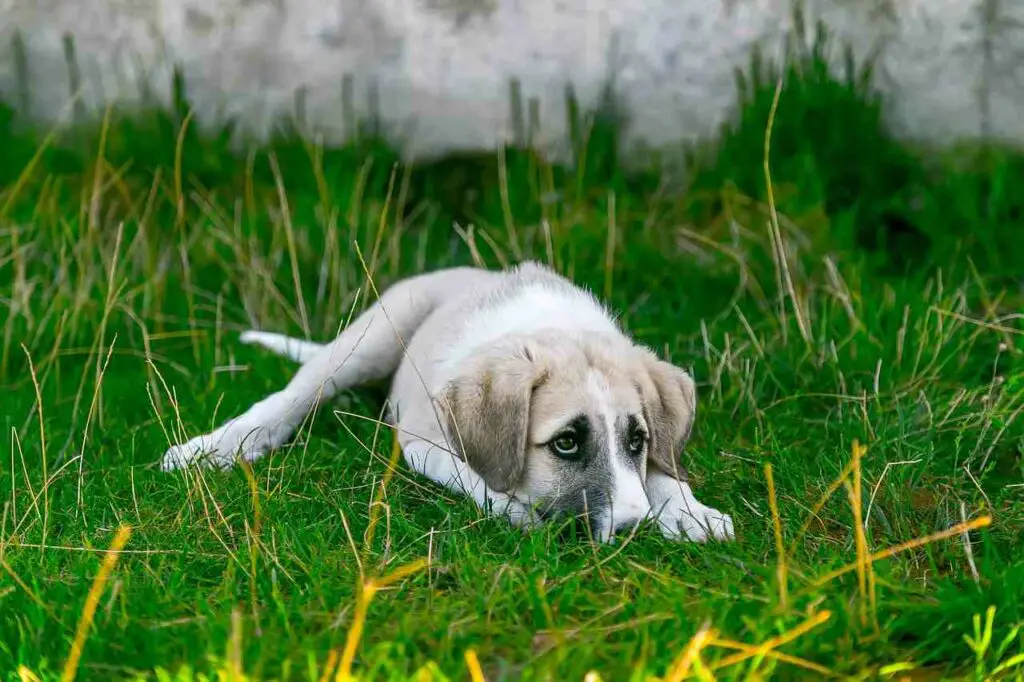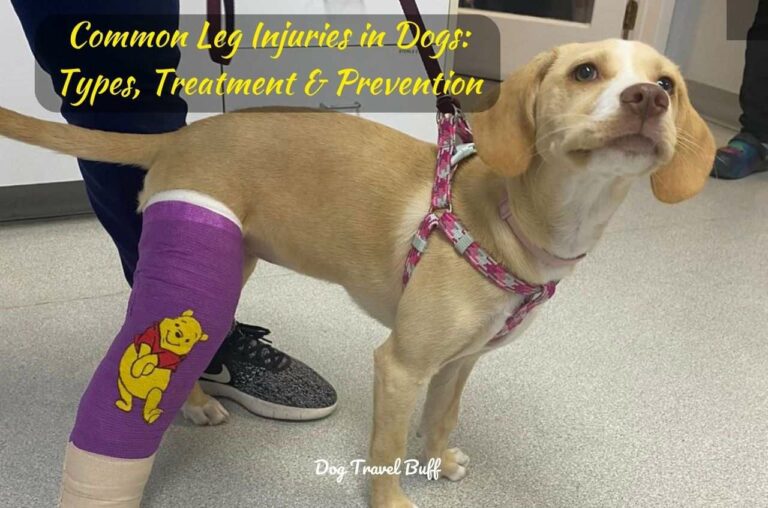What Results In Dog Fur Turning Rust Color? Easy Solution
Dog fur can turn rust color due to environmental factors such as exposure to the sun, poor diet lacking essential nutrients, infections or allergies, or genetics.
Every pet owner wants their pets to live a long and healthy life. And to ensure this, they take every possible step in their maintenance and care. However, uncertain situations can lead to health worries for your pet.

This post may contain affiliate links. If you buy something through one of those links, you won’t pay any extra penny, but I’ll get a small commission that encourages me to deliver more helpful content for you.
In the case of dogs, one such situation is the appearance of stains on their fur. It occurs or appears more visibly on the coats of white dogs.
Dog fur turning rust color is a common phenomenon that can result from dogs playing in dirt, grass, etc. This staining is caused by a compound called porphyrin. However, sometimes it is also the cause of some severe underlying health conditions.
Table of Contents
What is Porphyrin?
Porphyrin is a waste product produced by the dog’s body. These are produced when iron breaks down red blood cells. Porphyrin gets removed from the body primarily via feces. However, they can also be excreted through tears, saliva, and urine. Therefore, a red stain appears over time when the dog sheds tears or licks its fur.
The iron in porphyrin is the primary cause of the reddish-brown stains on the dog’s fur. The red stain caused by porphyrin is a cosmetic concern rather than a health concern.
Medical Reasons for Red Stains on Dog’s Fur
As noted earlier, the dog fur turning rust color is also caused by some health conditions. Therefore, with the appearance of these stains, it is vital to take the pet to the vet as soon as possible. It will help mitigate the risks that these stains can have on the dog’s health.
The primary health conditions that lead to the appearance of these red spots on the fur of the dog are:
Allergies
Like humans, dogs have allergic reactions to pollen, grass, dust, certain foods, certain plants, and more. To relieve themselves of the discomfort and skin irritation caused by the allergy, dogs resort to licking the affected area. It leads to saliva deposits in the fur. Their saliva contains porphyrin, so it can leave behind reddish-brown spots on their coat.
Dogs also scratch the affected area to get rid of allergy discomfort. This scratching can damage the fur and the skin. The scratched skin will act as fertile ground for yeast infections. It also causes red yeast stains on dog fur.
Allergies can also cause irritation and inflammation in the eyes. This irritation can give rise to tears that contain porphyrin. Therefore, it can cause stains on the fur around and under the eyes of the dog.
Eye Staining
Irritation in the eye is the root cause of excessive tear production in dogs. It can happen as a result of blocked tear ducts, eye infections that are bacterial, viral, or fungal, and trauma to the eye caused due to a scratch or a cut. Alongside this, poor grooming causes excessive growth of hair around the eyes. It also stimulates the excess production of tears.
Tear production in such cases is the root cause of red stains formed on the fur. Thus, the dog needs to get treatment for the irritation in the eye. The treatment will ensure that there is no excessive production of tears.
Another primary cause of eye irritation in dogs is caused due to ingrown eyelashes. Eyelashes usually grow from the follicles in the eyelid. However, eyelash disorders can cause the growth of hair follicles in abnormal locations, such as growing towards the eye rather than growing away from the eyes. Most times, this health problem is hereditary in dogs.
The three types of eyelash disorders found in dogs are trichiasis, distichiasis, and ectopic cilia. In extreme cases, this eyelash disorder can ultimately lead to causing corneal ulcers, bacterial infections, blindness, or loss of the eye.
The primary symptom caused by this health condition is the excessive flow of tears. These tears containing porphyrin will ultimately leave stains on the dog’s fur. Therefore, it is crucial to cure the root cause to avoid any severe health issues in the future.
Mouth staining
Excessive saliva production also leaves red spots on dog fur. Dogs have a natural disposition to lick themselves. However, excess accumulation of saliva on the coat due to the licking can lead to fur discoloration. It is most evidently visible on the furs of white dogs.
The primary cause of excessive saliva production in dogs is periodontal (gum) disease. It is a health condition that affects the oral cavity of dogs. In the long run, this can cause gum erosion, chronic pain, and loss of teeth and bone. The leading cause of this disease is the irregular tooth brushing of the dog. It can lead to the accumulation of plaque.
Another cause of excess saliva production in dogs is tooth root abscess. It is a severe infection that takes place around the root of the tooth. Tooth root abscess can cause excessive pain and discomfort to the dog. They even stop eating because of the pain. This condition also results in saliva production that can cause red spots on the licked fur area.
Behavioral Issues
Anxiety and boredom also makes a dog lick and bite themselves regularly. The dog needs to have regular contact with the outside world. As playful animals, they enjoy the company of other dogs and humans. Keeping them bound in space can cause stress and make them agitated and irritated.
Dogs do not like being kept in a cage or any enclosed space. It makes them more aggressive. Therefore, they start biting themselves and the people around them. It can result in the formation of red spots on their fur.

How to Treat Red Stains on the Fur of the Dog?
Superficially, these stains might look like they pose no hidden concern. But this is not the case most times. In most cases, immediate medical treatment and supervision are required to avoid the risk of any further severity of the conditions. Some of the best and most trusted ways to treat these stains are:
Learn About their Allergies
The first step in ensuring their good health is learning about their comforts and discomforts. Keeping them away from irritating allergens can help avoid excessive tear or saliva production. Red stains are the result of constant licking and tear discharge. Therefore, treating the root cause will help prevent the consequences.
Perform Regular Grooming
Long hairs around the eyes will cause eye irritation and thereby result in tear secretion. Therefore, regular grooming and trimming long hairs around the eyes will help reduce irritations.
It is advised to wash and flush their eyes with recommended and trusted eye wash such as saline eye wash solutions or Terra Septic eye drops. Using any other product can lead to causing excessive tear production.
Their eyes should be wiped regularly with the help of recommended wet wipes. The shampoo should also be the one that does not cause allergic reactions or side effects.
Examine Food and Water Quality
Poor food and water quality can adversely affect the dogs’ health. It can also cause discoloration of the skin and fur. Therefore, it is mandatory to ensure that they are given the best food and water intake to not compromise their healthy growth and development.
It is always advisable to consult a medical expert before changing the dog’s diet. In case your tap water is very high in minerals, then it is better to change it with filter water.
Feeding the dogs in stainless steel or ceramic food bowl is essential. Plastic bowls have the risk of spreading and harboring bacterial and fungal infections.
Final Words
The dog fur turning reddish brown is more than just a cosmetic concern. It often indicates a bigger health concern that it can lead to. Therefore, consulting a physician is the best way to ensure their good health. Apart from this, a good diet, regular grooming, and check-ups will assist you in keeping your fur friend happy, satisfied, and comfortable.
Read Next:
- How To Train Your Dog To Ignore Strangers– Easy Guide & Tips
- 8 Reasons Why My Dog’s Tongue Is Cold?
- 12 Reasons Why Dog is Excessively Drooling and Licking Paws
- 8 Reasons Why My Dog Sniffs My Ears
FAQs
1. What causes porphyrin in dogs?
A: Porphyrin in dogs is caused when the dog’s body breaks down iron from the red blood cells. These get commonly excreted through their feces. However, they sometimes come out via tears, urine, and saliva. The contact of porphyrin with the dog’s fur leads to the formation of red spots or stains.
2. Is porphyrin bad for dogs?
A: On the surface level, porphyrin is only a cosmetic problem. Therefore, it poses no harm to the health of the dogs. However, some underlying issues like allergies and tear and saliva production because of medical conditions can be a cause of concern. In such cases, the contact of porphyrin with the affected area can form stains and lead to serious health problems.
3. How do you reduce porphyrin?
A: Excessive amounts of porphyrin are the primary cause of red stains on dogs’ fur. To avoid this, it is essential to reduce the porphyrin levels in their body. It can be achieved by switching the dog’s water from tap to purified and distilled water. Another way of doing this is by not feeding dogs red meat high in iron.
4. What can I use to make my dog’s fur white again?
A: There are many homemade remedies to turn the dog’s fur white again. one way of doing this is by using a natural bleaching agent, like baking soda or lemon juice, mixed with water. Brushing this paste on the fur will help reduce the reddish-brown stains from their hairy coat. However, in severe cases, it is advisable to consult a vet as soon as possible.





